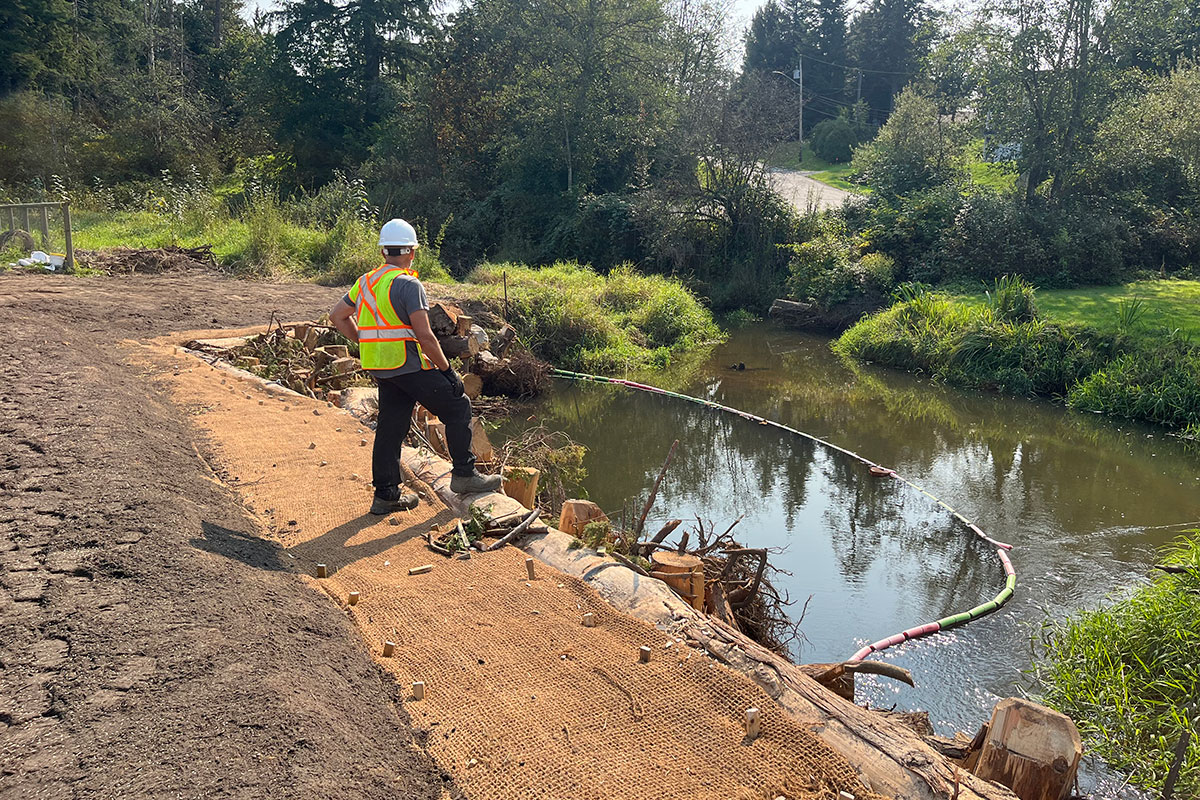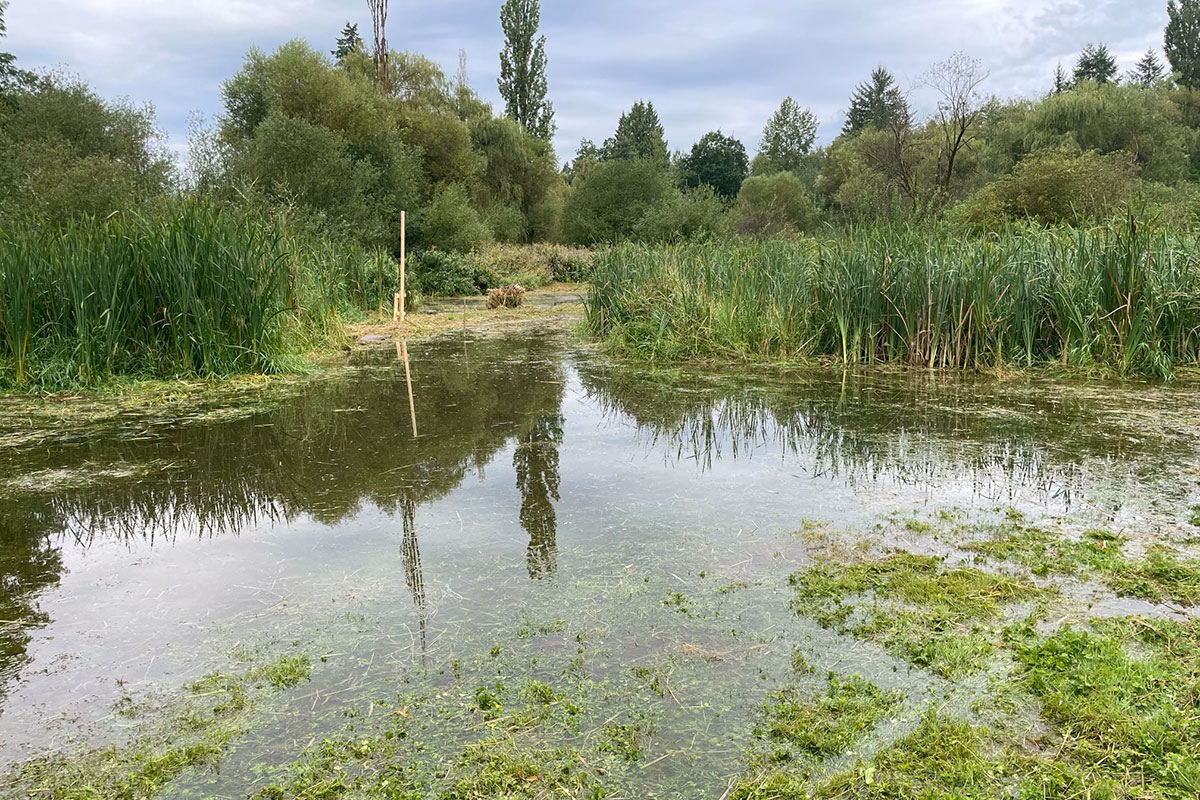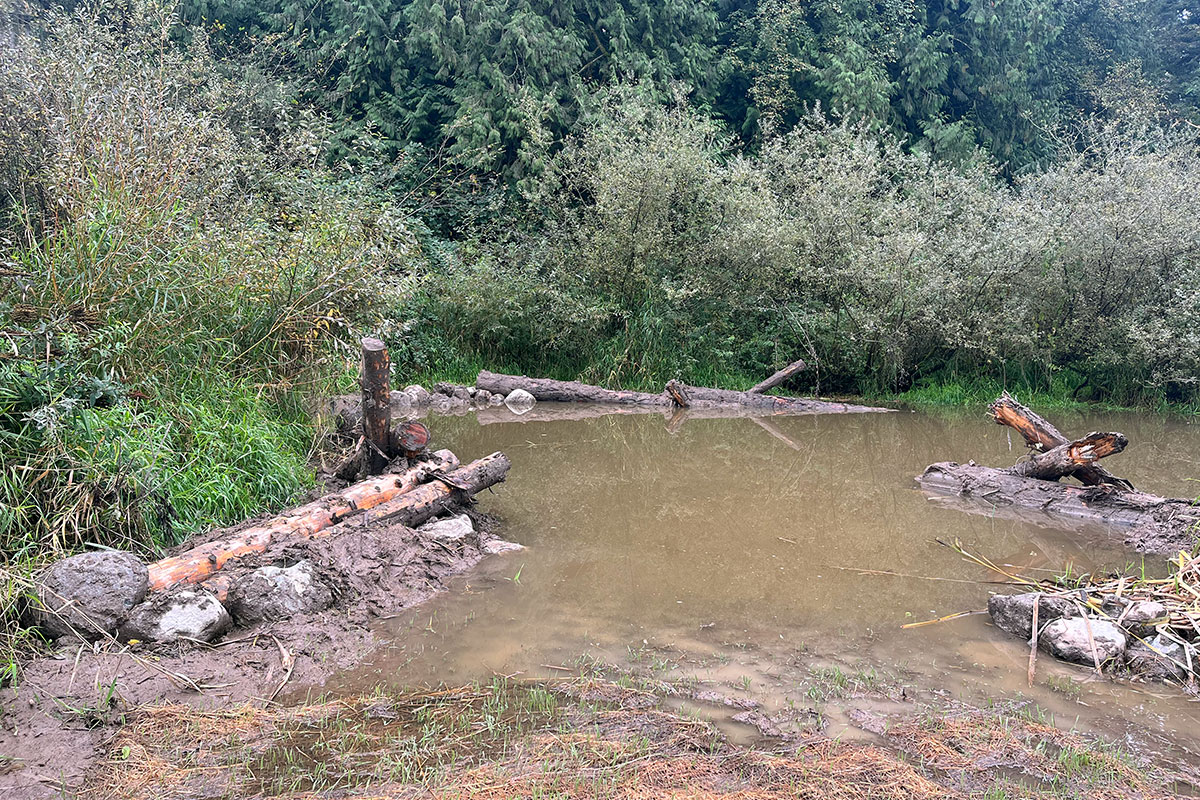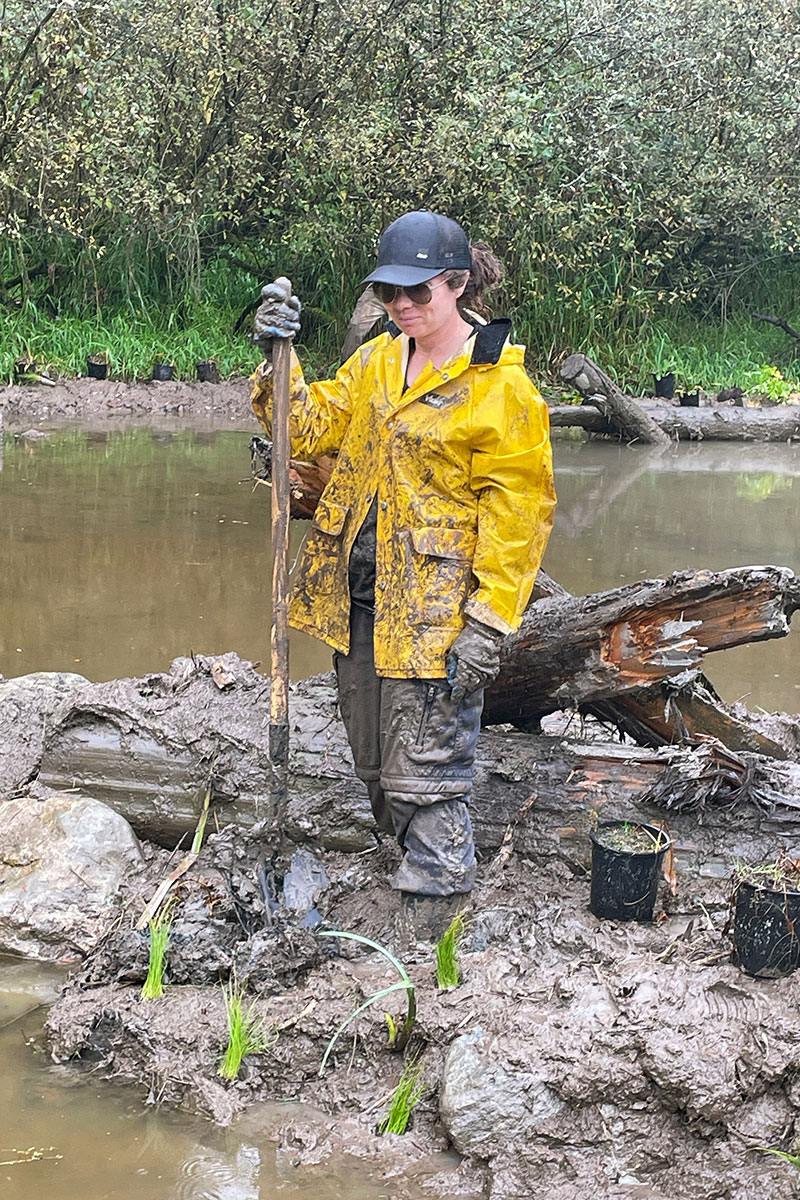Mid-August to mid-October are busy months in the world of habitat restoration, and this year the Foodlands sc̓e:ɬxʷəy̓əm (Salmon River)* Corridor has been no exception. The Foodlands Corridor Restoration Program team took on two new ambitious projects to expand the corridor this fall: another bank stabilization project and a marsh connectivity project.
“sc̓e:ɬxʷəy̓əm” is the hən̓q̓əmin̓əm̓ word for the Salmon River. hən̓q̓əmin̓əm̓ is the Downriver dialect of Halkomelem. Translations provided by Knowledge Keepers and language learners from Kwantlen and Katzie Nations.
Bank Stabilization
The team returned to one of the original properties started in 2021, to stabilize another section of streambank where a beaver dam changed water flow and caused significant erosion along the bank.
In this video it is possible to see the cutting away of bank that has happened through erosion. The pink and green lines are the flotation buoys for the silt curtain, which is used to exclude fish from getting into the work area as well as preventing excess sediment from entering the river. In the video, team members from Kerr Wood Leidal Consulting and Rivershed are performing a fish salvage to ensure no fish get injured during construction. Video by Chris Jenkins.
Erosion is a natural process, but it also causes sediment to enter streams. If this happens on a large scale in an area where it historically wouldn’t, the excess sediment can damage salmon and their habitat by smothering eggs, covering the gills of fish, and making it harder for salmon to find food.
Traditional bank stabilization methods tend to use rock material, known as rip rap, to stop erosion. While this technology helps to prevent erosion, it rarely provides any habitat value and can create new problems for salmon, such as hardening of spawning grounds and reducing riparian vegetation. This makes it difficult for salmon to build redds to spawn in and also can lead to higher temperatures and less food availability in streams.
Thanks to expertise provided by Foodlands collaborators at Kerr Wood Leidal Consulting, this bank stabilization project used green engineering techniques rather than traditional methods. The goal was to build the bank back out to its original location. This was done by driving logs into the streambed, then placing more logs and rocks overtop in a criss-cross fashion. Soil was then placed over top of that and wrapped in geocoir to keep it in place.
To begin the project, logs were driven into the streambed in order to build the bank back out. More logs were then placed in a criss-cross fashion overtop. Video by Chris Jenkins.

Marsh Connectivity
Bank erosion and flooding of low-lying areas are common challenges in the sc̓e:ɬxʷəy̓əm Corridor. The team was thrilled this year to begin work on a new property, expanding the corridor.
On this property, three ponds in the floodplain collected water over the winter but only one was properly connected to the sc̓e:ɬxʷəy̓əm year-round. There were two problems that the team was looking to address: the risk of young salmon getting stranded in the ponds in drier seasons, and the flooding of the whole lower section of the property for several months each year.

To address both these issues, the team came up with a design that involved connecting all the ponds together with channels and grading them so that there would always be a connection between the ponds and the river. A fourth pond was also excavated and connected to the rest to increase the potential for holding water.
As the ponds and channels were excavated, excess sediment was used to build up the floodplain to make it higher and more resistant to collecting water. In addition, large woody debris was brought in and placed in the ponds to provide habitat for insects, fish, and birds. In particular, large woody debris is a critical habitat component for the at-risk Pacific water shrew.


Bringing it all Together: Planting
Fall is the best time for planting native plants as it is the beginning of a wet season, providing the plants plenty of time to get their roots established before the next summer drought. In October, the team spent a week planting at the two new restoration sites, working hard to get more than 2000 plants in the ground! The plants were a mixture of trees, shrubs, and live stakes. Immediately after construction a restoration site can look quite bare, so the final stage of planting is critical. Early root development ensures that new food plants have a greater chance of establishing to outcompete the invasive species that were there before the restoration work. As time goes on, these plants will flourish to shade out invasive Reed Canary Grass, help stabilize the riverbanks and provide shade and food for aquatic and other species.


Teamwork makes the Dream Work
Throughout these months of habitat restoration, the team encountered many challenges ranging from difficulties in sourcing materials to unexpected heavy rainstorms in August. Which is just to say that projects often don’t go as smoothly as they appear! Luckily, the Foodlands team is made of professional, dedicated and passionate collaborators who took all the challenges in stride and ultimately completed these two ambitious projects.


This project was undertaken with the financial support of the Government of Canada through the federal Department of Environment and Climate Change. Additional support provided by the Pacific Salmon Foundation’s Community Salmon Program, Dr. Bronner’s and the Healthy Watersheds Initiative; a program that was funded by the Government of British Columbia and delivered by Real Estate Foundation of BC in partnership with Watersheds BC.
